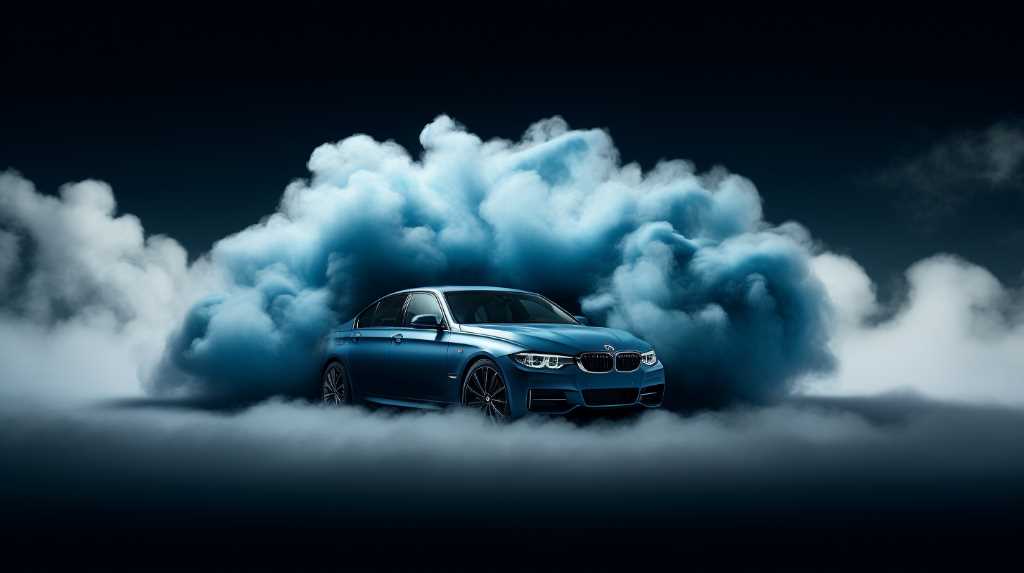Are you curious about the environmental impact of performance exhaust systems? Discover how these systems play a crucial role in vehicle emissions. Learn about the factors that influence emissions, the benefits and drawbacks of performance exhaust systems, and the regulations and standards in place.
Explore innovative solutions that aim to reduce emissions and create a greener future. Dive into this article to gain a deeper understanding of the relationship between performance exhaust systems and environmental sustainability.
Key Takeaways
- Performance exhaust systems increase the flow of exhaust gases, leading to a higher release of pollutants into the air.
- These pollutants, such as carbon monoxide, nitrogen oxides, and particulate matter, contribute to air pollution and can harm human health and the environment.
- While performance exhaust systems optimize engine performance, they do not directly reduce emissions. However, efficient engine operation can indirectly lead to lower emissions by burning fuel more completely and reducing unburned fuel and harmful pollutants.
- Performance exhaust systems can decrease backpressure, improving fuel economy and reducing emissions. High-flow catalytic converters in these systems also enhance emissions control.
The Environmental Impact of Performance Exhaust Systems

You should regularly consider the environmental impact of performance exhaust systems. While these systems are often chosen for their ability to enhance the performance and sound of your vehicle, they also have a significant impact on the environment. One of the main concerns is the increase in emissions that these systems can cause.
Performance exhaust systems are designed to increase the flow of exhaust gases, which can result in higher levels of pollutants being released into the air. This includes carbon monoxide, nitrogen oxides, and particulate matter. These pollutants contribute to air pollution and can have negative effects on human health and the environment.
Additionally, performance exhaust systems can also produce louder noise levels, which can be disruptive to both wildlife and the surrounding community. Excessive noise pollution can disturb wildlife habitats, disrupt their behavior, and even lead to population decline. It can also negatively affect the quality of life for individuals living near high traffic areas or popular driving routes.
To minimize the environmental impact of performance exhaust systems, it’s important to choose systems that comply with emission standards and noise regulations. Regular maintenance and inspections should also be conducted to ensure that the exhaust system is functioning properly and not releasing excessive pollutants.
Understanding Vehicle Emissions and Their Connection to Performance Exhaust Systems

To fully understand the connection between vehicle emissions and performance exhaust systems, it’s important to examine the role they play in the overall environmental impact.
Vehicle emissions are the gases and particles that are released into the air as a result of the combustion process in an engine. These emissions contribute to air pollution and have a significant impact on the environment and human health.
Performance exhaust systems are designed to improve the efficiency and performance of a vehicle’s engine. They achieve this by increasing the flow of exhaust gases, which allows the engine to expel waste products more effectively. However, it’s crucial to note that performance exhaust systems don’t directly reduce emissions. Instead, they optimize the performance of the engine, which can indirectly lead to lower emissions.
When a vehicle’s engine operates more efficiently, it can burn fuel more completely, reducing the amount of unburned fuel and harmful pollutants released into the atmosphere. Additionally, performance exhaust systems can help decrease backpressure in the exhaust system, which can improve fuel economy and reduce emissions.
It is important to recognize that while performance exhaust systems can contribute to reducing emissions, they aren’t a solution on their own. They should be used in conjunction with other emission-reducing technologies and practices, such as regular engine maintenance, proper fueling, and the use of catalytic converters.
Factors Influencing Emissions: The Role of Performance Exhaust Systems

By optimizing the flow of exhaust gases and improving engine efficiency, performance exhaust systems can both reduce emissions and enhance the overall performance of your vehicle.
There are several factors that influence emissions and the role of performance exhaust systems in mitigating them. One of the key factors is backpressure. A performance exhaust system can reduce backpressure, which is the resistance that exhaust gases face when leaving the engine. By minimizing backpressure, a performance exhaust system allows the gases to flow more freely, resulting in improved engine efficiency and reduced emissions.
Another factor that influences emissions is the design of the catalytic converter. Performance exhaust systems often feature high-flow catalytic converters that have a larger surface area for the conversion of harmful gases into less harmful substances. This design allows for more efficient emissions control and helps to reduce the overall emissions produced by your vehicle.
Furthermore, the materials used in performance exhaust systems can also impact emissions. Stainless steel, for example, is a common material used due to its corrosion resistance and durability. It helps to maintain the efficiency of the exhaust system over time, ensuring that it continues to effectively reduce emissions.
Examining the Benefits and Drawbacks of Performance Exhaust Systems in Terms of Emissions

One of the main benefits of performance exhaust systems is that they can significantly reduce emissions, while also improving the overall performance of your vehicle. By replacing your stock exhaust system with a performance exhaust system, you can enjoy a number of advantages when it comes to emissions.
Performance exhaust systems are designed to optimize the flow of exhaust gases, allowing them to exit the engine more efficiently. This improved flow helps to reduce backpressure, which in turn reduces emissions. In addition, performance exhaust systems often feature high-flow catalytic converters that are more effective in reducing harmful pollutants. These catalytic converters use advanced materials and design to promote better conversion of harmful gases into less harmful ones. As a result, the emissions produced by your vehicle are reduced, making it more environmentally friendly.
However, it’s important to note that while performance exhaust systems can help reduce emissions, the extent of the reduction may vary depending on the specific system and the vehicle it’s installed on. It’s also worth mentioning that performance exhaust systems may not be legal in all areas, so be sure to check local regulations before making any modifications to your vehicle’s exhaust system.
Regulations and Standards for Performance Exhaust Systems and Emissions

You should be aware that there are several regulations and standards in place for performance exhaust systems and emissions. These regulations aim to control and reduce the harmful emissions released by vehicles equipped with performance exhaust systems. One of the most prominent regulations is the Environmental Protection Agency’s (EPA) Clean Air Act, which sets emission standards for all vehicles, including those with aftermarket performance exhaust systems. The Clean Air Act requires that vehicles meet specific emission limits for pollutants such as carbon monoxide, nitrogen oxides, and particulate matter.
In addition to federal regulations, individual states may have their own emissions standards. California, for example, has the strictest emissions standards in the United States, known as the California Air Resources Board (CARB) regulations. These regulations require vehicles to meet even more stringent emission limits than the federal standards.
To ensure compliance with these regulations, performance exhaust systems must undergo testing and certification. Manufacturers must prove that their exhaust systems don’t increase emissions beyond the allowable limits set by the regulations. They may also need to obtain a CARB Executive Order to sell their products in California.
Innovations in Performance Exhaust Systems: Reducing Emissions for a Greener Future

When it comes to reducing emissions for a greener future, there are several innovative technologies in performance exhaust systems that you should know about.
These advancements focus on emissions reduction, sustainability of exhaust systems, and finding a balance between performance and environmental impact.
Emissions Reduction Technologies
Performance exhaust systems have become key contributors to reducing emissions and promoting a greener future. As technology continues to advance, so does the innovation in performance exhaust systems.
Emissions reduction technologies are constantly being developed and implemented to ensure that vehicles are more environmentally friendly. One such technology is the use of catalytic converters, which help convert harmful pollutants into less harmful substances. Another innovation is the inclusion of particulate filters, which capture and remove fine particles from exhaust gases.
Additionally, the development of hybrid and electric vehicles is also an important step towards reducing emissions. These vehicles utilize performance exhaust systems that are specifically designed to minimize emissions and maximize efficiency.
With these emissions reduction technologies, the automotive industry is making significant progress in creating a greener future for all.
Sustainability of Exhaust Systems
To achieve a greener future, it’s important to focus on the sustainability of exhaust systems through innovations in performance exhaust systems that effectively reduce emissions.
As the demand for more eco-friendly transportation options grows, manufacturers are developing new technologies to make exhaust systems more sustainable. One such innovation is the use of catalytic converters, which help to convert harmful pollutants into less harmful substances before they’re released into the atmosphere.
Another advancement is the development of hybrid and electric vehicles, which produce zero emissions from their exhaust systems. Additionally, the use of lightweight materials in exhaust system construction helps to reduce vehicle weight and improve fuel efficiency, leading to reduced emissions.
Performance and Environmental Balance
You can greatly contribute to a greener future by exploring the innovations in performance exhaust systems that effectively reduce emissions and strike a balance between performance and environmental impact.
As concerns about climate change and air pollution continue to grow, automotive manufacturers and engineers are constantly developing new technologies to address these issues. Performance exhaust systems play a crucial role in reducing harmful emissions from vehicles while maintaining optimal performance. These innovative systems incorporate various technologies such as catalytic converters, particulate filters, and improved airflow designs.
Frequently Asked Questions
How Much Do Performance Exhaust Systems Contribute to Overall Vehicle Emissions?
Performance exhaust systems can contribute significantly to overall vehicle emissions. They are designed to enhance engine performance, but this can lead to increased fuel consumption and higher emissions of pollutants like carbon monoxide and nitrogen oxides.
Can Performance Exhaust Systems Be Modified to Reduce Emissions?
Yes, performance exhaust systems can be modified to reduce emissions. By installing catalytic converters and utilizing advanced technology, you can minimize the environmental impact of your vehicle while still enjoying enhanced performance.
Are There Any Specific Regulations or Standards in Place for Performance Exhaust Systems to Control Emissions?
Yes, there are specific regulations and standards in place for performance exhaust systems to control emissions. These regulations help ensure that the exhaust systems meet certain criteria and reduce harmful emissions.
What Are Some Potential Drawbacks of Using Performance Exhaust Systems in Terms of Emissions?
Using performance exhaust systems may lead to potential drawbacks in terms of emissions. These systems can increase the release of harmful pollutants into the environment, contributing to air pollution and impacting overall air quality.
Are There Any Innovative Technologies Being Developed in Performance Exhaust Systems to Further Reduce Emissions?
There are innovative technologies being developed in performance exhaust systems to further reduce emissions. These advancements aim to minimize environmental impact and improve the overall efficiency of the exhaust system.
Conclusion
In conclusion, performance exhaust systems play a significant role in the emissions produced by vehicles. While they can enhance performance, they also contribute to increased emissions. It’s crucial to consider the environmental impact of these systems and balance the benefits with the drawbacks.
Regulations and standards are in place to ensure that performance exhaust systems meet emission requirements. Furthermore, ongoing innovations aim to reduce emissions and create a greener future for our planet.
Related Articles
Be sure to also check out these articles right here at Motion Performance Motorsports
The Ultimate Guide to Performance Car Exhaust Systems
Next Exhaust Article: High Performance Axle-Back Exhaust Systems
Previous Exhaust Article: Beyond the Noise: How to Choose an Exhaust System for a Stealthy Upgrade

Hey there, I’m Terra Frank, the driving force behind Motion Performance Motor Sports. I’m thrilled to have you here, exploring the fascinating world of cars, trucks, and everything related to automotive performance and accessories.




